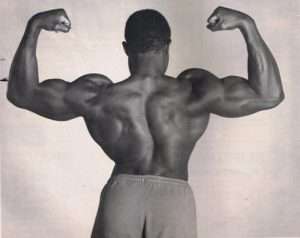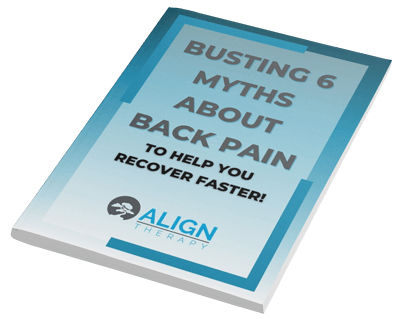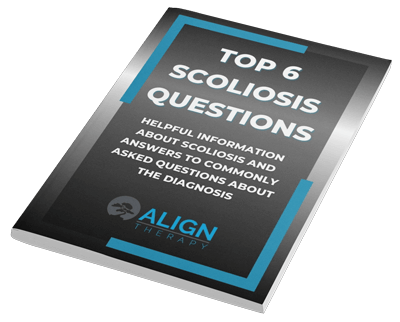One of the common things we see in the clinic is people who have recently undergone scoliosis correction surgery. And yet, still, I have people ask me if we treat patients post-surgery. The answer is a definite YES!
Even though we have a large focus on scoliosis specific exercise to avoid surgery, I am not anti-surgery in any way. I just don’t want it to resort to scoliosis fusion unnecessarily.
When is Surgery Required?
When spinal curves continue to progress past when the person is done growing, or it has progressed during growth to greater than 50 degrees, scoliosis surgery is indicated.

Sometimes, as an adult, scoliosis curves can progress to where other problems occur requiring surgery. This can be fractures, nerve impingement, along with many other things.
(Spinal correction surgery for kyphosis is very similar to scoliosis surgery and very similar information applies.)
The Good News! If surgery is indicated, there are some amazing surgeons in our area that can take care of you. If you are not yet to the point of surgery, scoliosis specific exercise can help stop progression to surgical intervention.
Now, if you have had surgery for scoliosis, whether it be adult or child, were you referred for physical therapy afterward? The unfortunate thing is that most of the time, the answer is “No”.
Here are 5 reasons I feel EVERY patient who undergoes scoliosis surgery should be referred to Physical Therapy. Ideally to a scoliosis specialist, but at the very least to a PT knowledgeable about the spine.
1. Scoliosis Surgery is Major Surgery
In order to do scoliosis correction surgery, many muscles and other tissues need to be disrupted. Even though these structures heal, the surgery still takes a significant toll on them.
 Smaller surgeries like single level fusions and discectomies usually have a referral to physical therapy to help return the muscles back to strength and increase the overall spine stability.
Smaller surgeries like single level fusions and discectomies usually have a referral to physical therapy to help return the muscles back to strength and increase the overall spine stability.
If these smaller surgeries require help to return to function, then definitely these larger scoliosis surgeries would benefit.
Most of the time, these muscles don’t just naturally return to their prior state. They need training and strengthening and specific focus on the areas that are lacking.
After evaluation of what is needed, a plan is developed to address the specific needs of the patient. In clinic the patient is trained on exercises and once independent with these exercises, performs them at home.
2. The Body Still Thinks it has Scoliosis
Even though with scoliosis “correction” surgery the spine is straighter on x-ray and the scoliosis reduced, that doesn’t automatically change everything else. 
Scoliosis is a 3-dimensional deformity. Surgical correction usually addresses the S or C shape of the curve primarily. The rotation of the ribs is still present and this influences how the muscles work. There is also some percentage of the curve that can’t be completely corrected.
The surgery doesn’t magically change the unbalanced muscles. In fact, the sudden change for the muscles can cause some spasms and tension to develop. Manual therapy and specific stretching can help to alleviate this along with strengthening.
Left unchecked, these imbalances can continue and limit function and return to activity.
3. New Movements and Mechanics Need to be Learned
The new architecture of the spine functions different. This is especially true of the lack of mobility of the spine. With a fusion of the spine, the areas fused will not have motion, so the motion required for daily life will need to come from somewhere. 
With the right mobility and training, there is no reason patients cannot get back to full activity.
For example, I have treated many dancers who have had scoliosis correction. To return to dance, they need more mobility in the shoulders and hips because the normal motion of the spine isn’t available. We work on flexibility, along with stability to achieve their goals and return to dance.
With a more upright posture, different muscles will need to be active. Strengthening of these muscles can limit future aches and pains associated with weakness.
4. Get Back to Things You Want to Do
Just like in the example above of the dancers, training can be done to return to prior activities without other problems. 
Swimmers, for example, will need to learn how to swim without as much rotation of the trunk and may need more flexibility in the hips and shoulders. This is the same for those who want to return to activities like weight training or similar sports.
If someone with scoliosis surgery wants to get back to running, assessment of running form is essential. This will help to reduce the strain on the spine and keep them running long term.
Whatever the activity, there are likely some things that may be beneficial to learn. A thorough assessment will shed light on those things that need to be worked on to achieve the best results.
5. Improve Healing and Reduce Nerve Pain
This is the most important reasons. With such a large surgery, there are a lot of structures that need to heal. The muscles need to heal from being moved away from the spine. The bone needs to heal and fuse. The ligaments and tendons need to adapt to their new positions.
 Physical Therapy is not done immediately following surgery, but after the incision heals and the surgeon clears you to begin activity, why would we not want to strengthen? Addressing the specific issues of the person should be essential!
Physical Therapy is not done immediately following surgery, but after the incision heals and the surgeon clears you to begin activity, why would we not want to strengthen? Addressing the specific issues of the person should be essential!
Recovery could be faster, and return to activity could be smoother with a guided approach. Instead, what I see right now is a general instruction to walk. Then, after some healing, the patient is told they can do pretty much anything. Not much guidance there!
One other reason to address healing is the nerve pain I see in a lot of my post-op patients. With some specific stretching and manual techniques, including dry needling, we can alleviate most if not all of this pain. It is sad when I see people years after surgery who have been suffering with nerve pain for those many years.
Any time you have a spinal fusion you run the risk of the segments (discs, joints, etc) wearing out above and below the fusion. With such a large fusion, this risk is elevated.
To prevent this, we try to improve the stability of the spine as much as possible and reduce the strain from tension or tightness. While this may not totally prevent those segments wearing out, it is the most effective.
Conclusion
Those are my top 5 reasons EVERYONE who goes through scoliosis surgery should receive treatment by a physical therapist. There are other reasons, but those are my top ones.
I truly wish surgeons would be more proactive about sending post-operative patients to Physical Therapy. I think sometimes they don’t because they are not sure the PT knows how to address it correctly. They also might not feel like it is totally necessary.
Giving these patients the best start possible seems to me like the better way to treat. Why not address these issues before they become problems?
If you, or someone you care about, has had scoliosis surgery, or is thinking about spinal correction, please share this information!
If you have any specific questions regarding scoliosis specific treatment or post-operative care, please email me at david@aligntherapyutah.com. I would be happy to answer any questions you have!
Thanks for reading!



